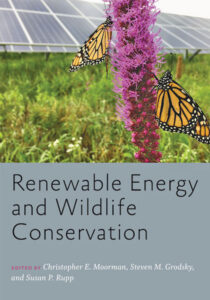 The funny thing about trying to re-make the world after generations of humans have so effectively un-made it is that sometimes even the best intentioned of plans for a more environmentally friendly and sustainable future can end up producing undesirable, sometimes even environmentally harmful, effects. Solar panel farms, for example, may be seen as less destructive that fossil fuel extraction, however they require for land to develop, disrupting larger amounts of plant and wildlife habitat.
The funny thing about trying to re-make the world after generations of humans have so effectively un-made it is that sometimes even the best intentioned of plans for a more environmentally friendly and sustainable future can end up producing undesirable, sometimes even environmentally harmful, effects. Solar panel farms, for example, may be seen as less destructive that fossil fuel extraction, however they require for land to develop, disrupting larger amounts of plant and wildlife habitat.
To help those studying as well as those already working in the conservation field learn how to think about such paradoxes more comprehensively and effectively, Christopher E. Moorman, Steven M. Grodsky, and Susan P. Rupp assembled a highly accomplished group of contributors for the creation of the new Renewable Energy and Wildlife Conservation.
Part of the Johns Hopkins University Press Wildlife Management and Conservation series, this new collection of essays brings together some of the most up-to-date research and thinking in both the fields of renewable energy and wildlife conservation. Taking the editorially guiding position that a sustainable future is best achieved through working “at the nexus of these fields,” the authors examine how renewable energy is produced, what the documented effects of such production is upon wildlife populations, and how large-scale energy production can best be accomplished while minimizing harm to wildlife, then conclude with a look at the state of the present technology, and present suggestions as to where future research should be focused.
As all-too-often those from the energy and conservation fields talk past one another, a coming-together of noted authorities in both fields seeking a beneficial solution to both their respective purposes is heartening indeed. Given this, and all the information presented in its pages, Renewable Energy and Wildlife Conservation is a book that should be read by all who are professionally involved in both these fields as well as any others who are simply in search of a better understanding of two of the defining challenges of our age.
